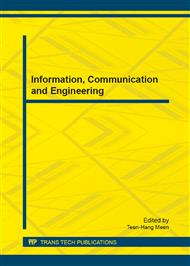p.43
p.49
p.55
p.61
p.67
p.73
p.81
p.87
p.93
Using MATLAB for Processing RGPS Data to Determine the Altitude of Water Surface
Abstract:
The purpose of this study is to use the software of MATLAB for processing the direct and reflected signals of GPS to monitor altitude of water surface in the water flume, as well as to establish a practicable technique of measuring sea water level. It is because before determining water wave pattern, the feasibility and accuracy of reflected GPS method must be proved. Therefore, there was a field test in the Mid-size wave flume of the Tainan Hydraulics Laboratory, National Cheng Kung University. After improving RGPS positioning procedure, the tranquil water level and the steadily descending of water level observation for one hour were performed. In this research, an integrated GPS receiver that employed direct and reflected GPS signals for the measurement was introduced. Both RHCP and LHCP antennas were employed to simultaneously receive the L1 and L2 carrier phase of direct and reflected signals. After the data analysis of the GPS observation, the position of signal reflection and the water level of the wave were solved. The results of the RGPS, wave gauge, and staff meter were coincided within 0.5cm ~ 1.0 cm. The differences between the reflection heights of this GPS system and the record of wave gauge were almost identical within 90%. It is proved the reflected GPS technique is possible to monitor water surface altitude and determine water wave patterns.
Info:
Periodical:
Pages:
67-72
Citation:
Online since:
February 2013
Authors:
Keywords:
Price:
Сopyright:
© 2013 Trans Tech Publications Ltd. All Rights Reserved
Share:
Citation:


